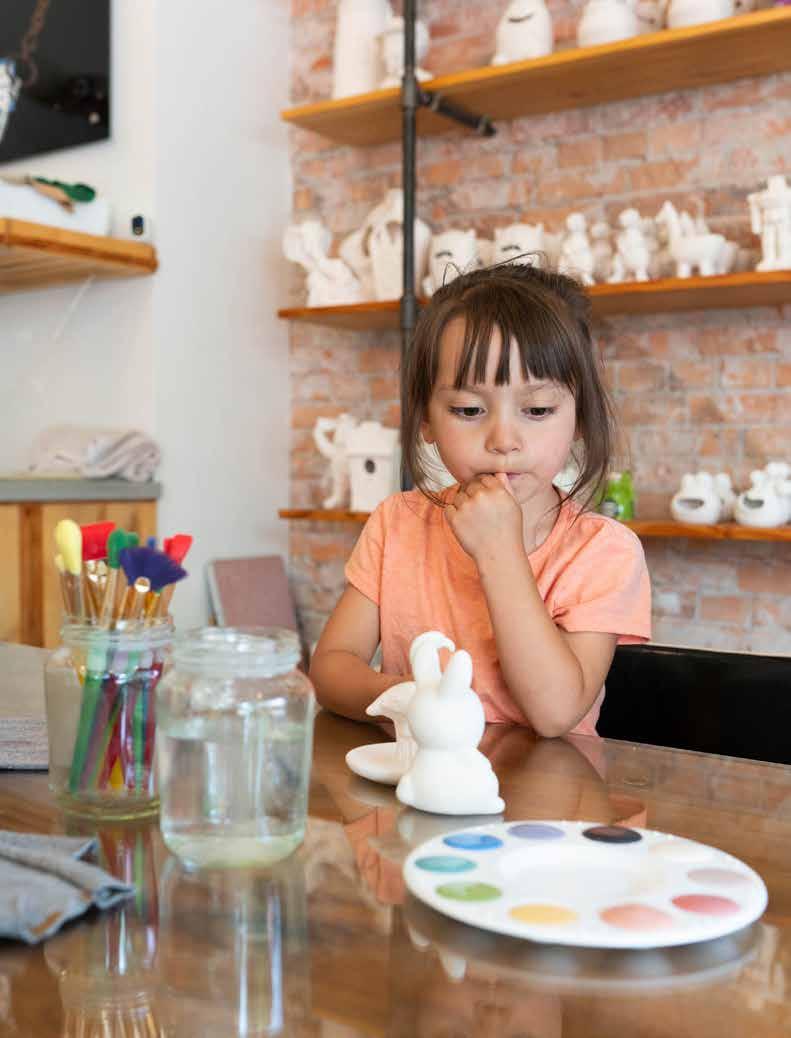
Kid + Pet Issue

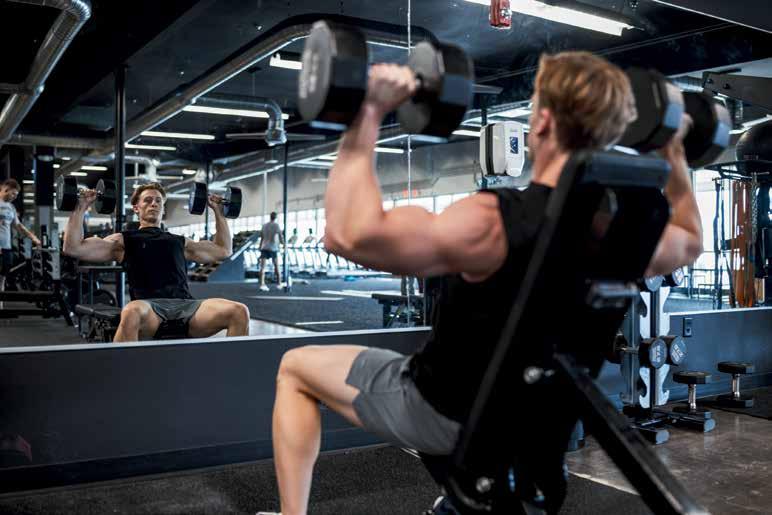

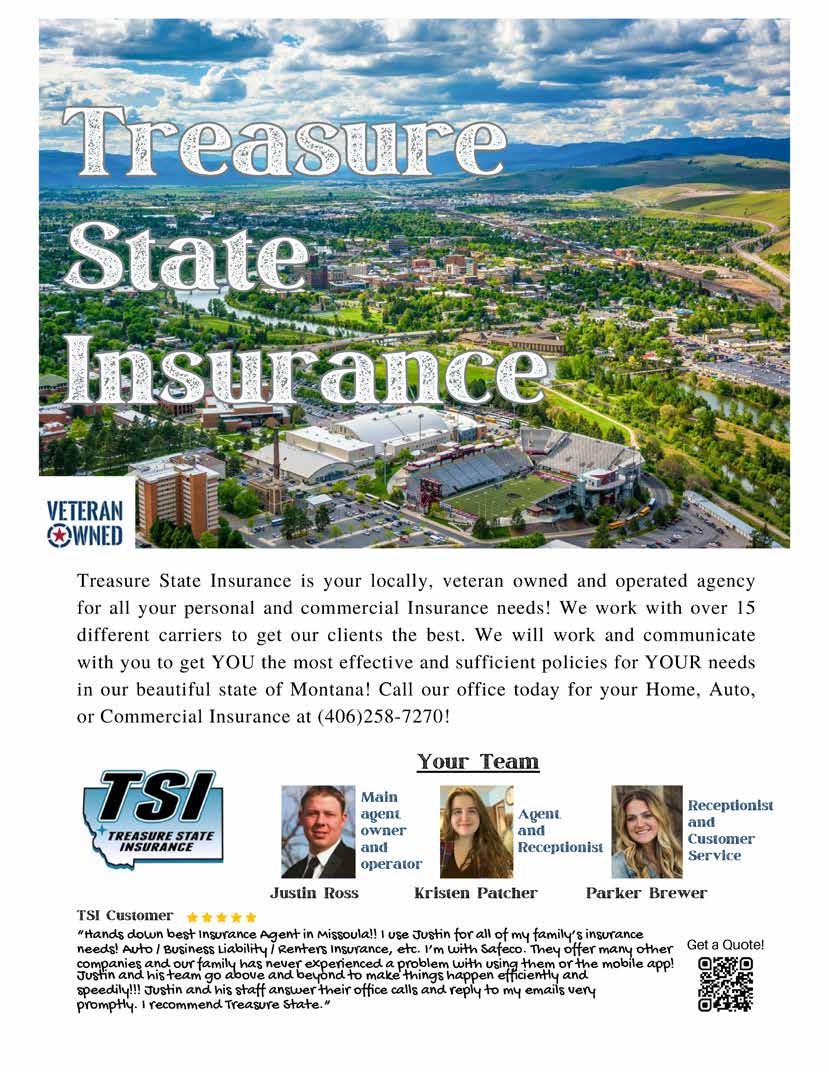
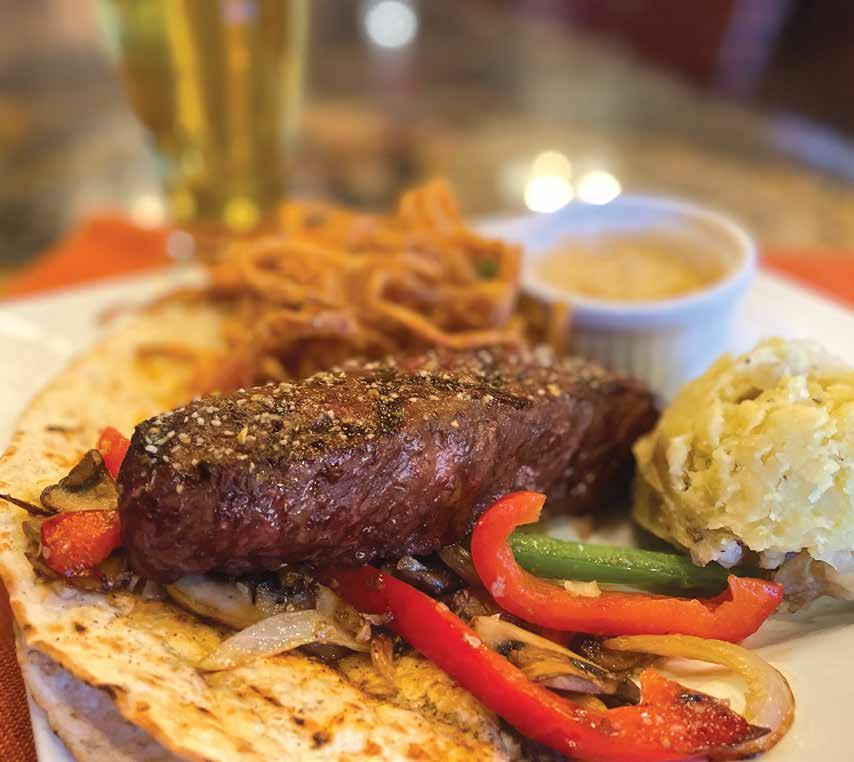
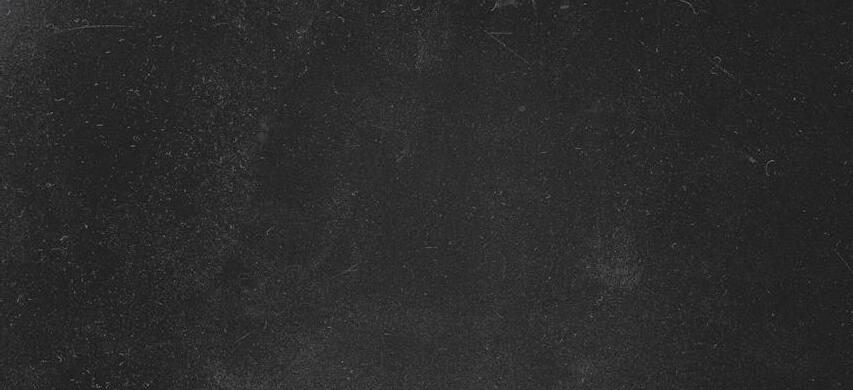

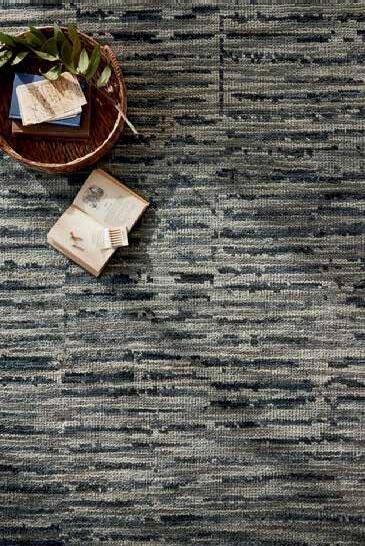












In June, my brother and his family visited my farm to see my newest addition—my sweet son, Lionel. Born just 10 days prior to their arrival. And several other additions: four lambs, one kitten, and five chicks. Kids and animals go hand-in-hand, especially at my residence.

When it was time for them to head back to Seattle to wrap up their west coast adventure, my eldest niece got the farm blues. She missed the animals and Montana. Could you blame her? There's something magical about a little bit of land and a lot of beating hearts. A certain energy is always present—the swishing of a horse's tail, the bleating of a sheep, the flapping of a chicken's wings, a dog panting and pacing the fence line. They drove the quad, camped in the yard, and watched a movie under the stars. There's some sense of being in a ruleless stupor when you're tucked away on a little farm. Shoes are optional, bedtime comes long after the animals are all fed, and there's not a soul around to witness you squatting for a pee in the tall grass if it suits your mood. It's like George Washington once said,
"I had rather be on my farm than be emperor of the world."
With this being the Kid + Pet issue, I love thinking back to my time with family earlier this summer and seeing my new little boy take his place in the chaos of things. He doesn't know that he's already landed in my childhood dream—a place overrun with animals and things to do. When I see my first son Sutton (who is turning 4-years-old this month) running in the yard barefoot and waving a bubble wand, I imagine the two of them growing up a little more free because of their Montana roots.
And though it may be a bit far-fetched, I think my animals truly love living here, too. One thing's for certain, my Caucasian Shepard mutt Cleopatra (pictured here with me when she was just 8-weeks-old) loves a May snow day like the one we had this spring. She is built for our long winters and her gleeful energy toward a cold or dreary day helps nudge my mood in a similar direction.

CHELSEA LYN AGRO, EDITOR @MVLMAGAZINE
PUBLISHER
Mike Tucker | MTucker@CityLifestyle.com
EDITOR
Chelsea Lyn Agro | Chelsea.Agro@CityLifestyle.com
ACCOUNT MANAGER
Marla Huggins | Marla.Huggins@CityLifestyle.com
STAFF PHOTOGRAPHER
Erika Spaulding | InspiredByMontana@Gmail.com
CONTRIBUTING WRITERS
Chelsea Lyn Agro, Emma Trotter, Susie Wall
CHIEF EXECUTIVE OFFICER Steven Schowengerdt
CHIEF OPERATING OFFICER Matthew Perry
EXECUTIVE DIRECTOR OF HR Janeane Thompson
AD DESIGNER Evan Deuvall
LAYOUT DESIGNER Kelsey Ragain


Proverbs 3:5-6






Zootown Arts Community Center offers everyone
Local photographer Erika Spaulding celebrates her Black Labrador Onyx this month (and every day).
Local doula Marisa Wright of Sacred Roots holds space and offers support for Missoula mothers like writer Emma Trotter.
The Zootown Arts Community Center (ZACC) is a treasure trove for artistic opportunity. The inquisitive 4-year-old Stevie is deciding on what paint colors to use on her next project.
Erika Spaulding




The Dylan Steigers Concussion Project is running their annual summer sale for baseline concussion tests for a discounted price of $50. The CDC recommends having your athlete tested annually. This information is highly beneficial in the detection and treatment of a concussion, should your athlete experience one. Testing is completed by Peak Performance Physical Therapy concussion specialists and includes assessment of the vestibular and oculomotor systems, computerized eye tracking, balance, and a cognitive screen. Call 406.541.3004 today to schedule your athlete.
Heidi's Kittens started in 2021 when Heidi Schnarr learned how many animals were getting euthanized in shelters due to lack of space and resources. Through networking with different rescue organizations, Heidi transported over 150 animals, with the help of volunteers, from euth lists to their second chance at a good life. Today, she is inundated with kittens and cats who need homes. Foster families help Heidi take in more animals. Visit HeidisKittens.com to volunteer today.
Pet Fest is back! Bring your pet to Caras Park to enjoy a day of spoils. There will be exciting contest, pet adoptions, and a plethora of exhibitors who will offer tons of products and services.
Scan to read more

















ARTICLE BY CAMILLA PETERSEN
1.8 million years ago, home erectus, the predecessor of the modern human developed a unique bipedal structure. We, the modern humans of today retain this body architecture that allows us to walk upright. We have a short and wide pelvis, our legs are longer than our arms, the bone positions allow for bearing weight, our feet and toes are aligned, and our skull maintains the alignment of the spine.
Our unique skeletal design is supported by active musculature that engages with the nervous system of
our body to maintain this upright position not only during waking but also with every other activity. We sit down and rise off the floor without the collapse of our upright posture.
1.8 million years of human evolution programming for upright posture will not be derailed by 100 years of modernization. Our musculoskeletal structure is truly designed for flexibility, core stability, and motion. It is not designed for prolonged periods of immobility, sitting, or unilateral specialized repetitive activity. We

are uniquely positioned for whole muscle chain utilization to perform complex and arduous tasks.
Tapping into our evolutionary origins will prevent injuries, cure us of the plaguing back pain, and help our kids grow up into powerful humans. How do we start? We let kids be kids. Unstructured and free play outside will inadvertently allow our kids to grow versatility and well-roundedness in the utility and strength of their muscle structures.
Running outside on uneven surfaces, climbing hills and play structures, walking on a beam for balance, and jumping on a trampoline hones the development of the variable muscle fibers in our kids’ bodies to create strength and injury resilience.



Even if our kids play organized sports and are physically fit, we also need to encourage variable play and interaction with the natural world. Through unrestricted play, kids automatically engage their joints, ligaments, and muscular support to create balanced and flexible core structures that will set them up for success in life. Climbing a tree, jumping off a rock, and playing chase will do wonders.
Camilla Petersen is the owner of Petersen Concierge Medical, a curated bespoke private medical practice, where she incorporates the principles of Dynamic Neuromuscular Stability, functional fitness, human kinesiology, and development into her practice.





















ZOOTOWN ARTS COMMUNITY CENTER OFFERS EVERYONE THE OPPORTUNITY FOR ART


"We want people to feel welcome and not intimidated by art.” - Jen Ryan Hickes
Let your creative side run wild at the ZACC!
The Zootown Arts Community Center (ZACC) is a non-profit arts center that plays a vital role in the Missoula community. Not only does it support and provide space for local artists, performers, and musicians, but it also works to make these art forms available to a diverse range of community members.
“At the ZACC, we try to cultivate community through arts experiences,” says Jen Ryan Hickes, the ZACC’s development and marketing director. “We have a big focus on making art accessible to all. The things we do here are arts related but really, it’s a community center. We want people to feel welcome and not intimidated by art.”
The ZACC is located in the historic Studebaker building in downtown Missoula. In 2019, the center moved from Missoula’s Northside neighborhood to the historic Studebaker building downtown thereby tripling their space to three floors of galleries, performance space, classrooms, artist studios, and a printshop.
An important part of the ZACC’s mission is to make sure that the center is a welcoming environment in terms of accessibility, diversity, and equity. “We serve so many different audiences,” says Jen. “Lots of families know us through our classes, other people know us through the pottery studio, and concert goers know us through the comedy shows and punk bands. It’s definitely diverse and multi-generational. We’re often the first gallery or first concert that a lot of people have been to, especially young people.”
Begin your art-filled experience at the ZACC the minute you walk through the front door. The first thing you’ll see is a delightful retail shop where you can purchase jewelry, cards, t-shirts, and much more made by talented local artists. Jen is proud to say that the majority of proceeds from all sales go back to the artist with the remainder being used to help fund the center.
The bright and welcoming entry space also holds an art lounge where kids and adults can spend time
reveling in their creative side at little to no cost. Choose an item from the wall of unpainted pottery pieces waiting to be decorated, or a do-it-yourself art project put together by the staff. You’ll find all the materials you need in the free art supply closet filled with everything from paper to stickers to yarn to reference books. All these resources are especially great for parents looking for activities for the kids. “I love that my daughter—when looking for something to do with her friends—says, ‘Maybe we’ll go hang out at the ZACC for a bit,” says Jen.
Continue throughout the building to the Main, Blackfoot Communications, and Youth galleries, all of which are free and open to the public during regular hours. Just beyond the Blackfoot Gallery sits the 175-seat performance space where the ZACC hosts a diverse line-up of musicians and performance artists each month. Gallery and venue director Mikyla Veis works with a team to formulate the schedule which often results in more events than days in the month. Mikyla says, “We try to curate concerts and gallery shows based on accessibility and fulfilling our mission as it applies to all different types of art. We want to make sure there is a mixture of established and new artists covering a range of age groups and mediums.” One of the best things about the concerts and events is the affordability. Many will set you back less than $20 and some are even free.
To foster a love for the arts in the younger generations, the ZACC offers a variety of camps, classes, and gallery space to children throughout the year. Rock and rolling kids take over the basement during rock camps when children and teenagers have access to electric guitars and drum sets that would make most adult headbangers salivate. “Kids form a band, write a song, learn to play instruments and how to rock on stage. They even use our printshop to make T-shirts,” says Jen. “It’s as much of a confidence builder as anything, and it’s a way to go through this creative experience together as a band.”


“We try to curate concerts and gallery shows based on accessibility and fulfilling our mission as it applies to all different types of art." - Mikyla Veis “ ”
Jen is especially excited about this fall’s 10th annual Missoula Monster Project. Kindergarteners throughout Missoula Public Schools will use their imagination to not only draw a monster, but also dream up what it likes to do and likes to eat. Each monster is then paired with an adult artist who recreates their own version, and both monsters are displayed side by side in the Main Gallery at the ZAAC so children can proudly show off their creations. The adult’s monsters will be donated by the artists for the ZACC to sell. “Last year we had 189 kids participate,” says Jen. “It’s a fundraiser for the center, but also it’s a great activity for all kids, especially those that may not have a dedicated art class in their school.”
Upstairs, a classroom reverberates with creative pandemonium as youth art instructor Nikki Rossignol McCoy moves about a gaggle of excited little ones using

their imaginations to create their own works of art from materials donated to the center. “Everybody knows to bring their junk to the ZACC,” says Nikki with a laugh.
“One time we received a bunch of cigar boxes donated from a cigar club, so I cleaned them out and created a class around that. It’s fun to dream up projects using what we have.”
The ZACC also offers what Jens calls a “robust” scholarship program available to the entire family. “We get help from the Washington Foundation and other community partners so we can really make sure our classes are accessible. We don’t want to turn anyone away. If you want to make some art, we want you to be here,” she says. “I think people that live in Missoula cherish it as an arts town, but you really need an entry point to that. I think the ZAAC can be that for a lot of people.”
CONTINUED >


I
think people that live in Missoula cherish it as an arts town, but you really need an entry point to that. I think the ZAAC can be that for a lot of people.
— Nikki Rossignol McCoy “ ”



— Nikki Rossignol McCoy













ARTICLE BY CHELSEA LYN AGRO | PHOTOGRAPHY BY ERIKA SPAULDING

LOCAL PHOTOGRAPHER ERIKA SPAULDING CELEBRATES HER BLACK LABRADOR ONYX THIS MONTH (AND EVERY DAY)

Onyx is well photographed and well loved by local photographer Erika Spaulding. He turns 10-years-old this month and we celebrate his celebrity status in the Missoula community with a collection of his favorite things: a cake from Bernice’s Bakery, a dog wash at Happy Days Car Wash, a pup cone from Big Dipper, and some quality time in the great outdoors.
Onyx has traveled all over the pacific northwest, up and down the coast and Montana, border to border. He’s been to Glacier and Yellowstone National Parks, Idaho hotsprings, Washington waterfalls and woods, and Oregon’s salty surf. He’s a dock dog gold medalist, certified pet partner to medical facilities, assisting in the memory care unit and is an endof-life companion.
Fun fact: he once flew first class to Maine to explore the east coast and picked out a lobster toy on his own at the airport.
We love you, Onyx! Happy Birthday, good boy!
CONTINUED >























ARTICLE BY EMMA TROTTER |

“Help me,” I whisper, eyes squeezed shut. Marisa Wright is at my shoulder, repeating my name, and she breathes slowly with me, supporting my efforts to relax as much as possible before the next contraction comes. The lit-up windows of Community Medical Center illuminate the falling snow outside, and at 1:35 a.m. on election night in 2022, my baby is born.
It’s a typical day—or, really, night—for Marisa, who has been a birth doula since 2012. In fact, another client of hers arrived at the hospital while I labored, so she splits her time between both our rooms for the next hour.
“It’s amazing absolutely every time,” Marisa said. “I learn from every single birth and every single person.”
Marisa, a native Missoulian and mother of two, was drawn to birth work because of her own first birth experience.
“I was always that person who people felt comfortable sharing the hard things with,” she said. “My birth didn’t go as planned, and I really wished in that moment that I had someone to hold space for me, guide my nervous system and heart through that.”
Now a Certified Birth and Postpartum Doula through DONA International, she did her first doula training with her 5-monthold in tow. She is also a lactation consultant and a Certified Spinning Babies Parent Educator.
“A lot of what I do for people is normalizing and tending the worries of labor that our culture is so good at instilling,” she said. “It doesn’t matter what my philosophy on birth is, it’s what’s your philosophy and how can I support that.”
Marisa often partners with fellow doula Kendra Potter, who steps in if Marisa is attending another birth or otherwise unable to support a client as planned. The two have worked together for over five years, and they first met because Marisa was Kendra’s doula for the birth of her second child.
“She’s deeply trusting of bodies,” Kendra said. “I really appreciate that she has education around the shape of the pregnant body and how the position of the pregnant body can inform the baby’s presentation as they make their way down.”
Marisa’s non-profit, Mother Moon Project, uses fundraising and sponsorship to make holistic prenatal and postpartum care more financially accessible, meshing perfectly with her view that doulas help connect pregnant families with other helpful resources in the community, such as pelvic floor physical therapy and chiropractic care. Kendra emphasized Marisa’s great relationships with healthcare providers in Missoula.
“That gives her access that not all doulas get,” she said. “There are a lot of choices that are available, even if you’re in a hospital scenario where your provider is making strong suggestions about the ways we might go about a baby coming into the world.”
Kendra compared giving birth with doula support to visiting Rome and staying with a local, not just reading the guidebook.
“That to me is what a doula can provide in the birth space—little tips and tricks from someone who knows their way around birth,” she said. “When we don’t feel like we have all the information, we don’t feel safe, and that’s when we don’t dilate, or when we resist and fight.”
Marisa said that transformations like pregnancy, birth, and postpartum can bring up a lot of feelings that our culture is not always good at honoring, or even recognizing.
“There’s a box of tissues in my office for a reason,” she said. “Any transitional phase is going to bring shedding of layers, bring up how you were raised, how you want to parent, which is really confronting for some people. More and more people are having babies later, so you’ve lived the majority of life an independent, autonomous being. Shifting into caretaking 24/7, we don’t talk about the transition, and the amount of grief that can come in. Holding opposites—extreme joy and hard grief—is a really human, normal experience.”
Opposites, and the continuum between, recently drew Marisa to death doula work.
“That thought of birth and death are on the same threshold and you’re either coming or going,” she said. “Why can’t we bring the same beauty into death, as birth, at that threshold?”
Marisa’s business is called Sacred Roots to capture these themes. “There’s a sacred edge in beautiful things, but there’s also a sacred edge in the really hard,” she said. Her words resonate with me, pregnant again.
“You have to let go and let the current take you,” said Marisa, who enjoys river rafting. “There’s that moment when you want to get away from the sensations—the pitch gets higher, breathing gets faster, now fear has taken over. We’re your banks. We can’t do the work for you, but we’ve got you.”
1 part of each dried Calendula, lavender, witch hazel and plantain. For each bath use a combined cup or half cup (depending on preference), steep at least an hour in 32oz freshly boiled water, overnight preferred. Add a half cup or full cup (again, depending on preference) of sea salt to a bath with the herbal mix. Bathe up to 2-3 times/day for up to 20 minutes. Make sure not to have the bath too hot, or sit for more than 20 minutes, to avoid dissolving stitches.





“THERE’S A SACRED EDGE IN BEAUTIFUL THINGS, BUT THERE’S ALSO A SACRED EDGE IN THE REALLY HARD."
- MARISA WRIGHT















ARTICLE BY CHELSEA LYN AGRO
PHOTOGRAPHY BY MONTANA PEDS
It isn’t hard to imagine being a working parent with a sick child who needs care right away. Or a parent with an injured child on a holiday weekend. Primary care is closed or we have to take time away from school or work to pursue medical attention. Lack of time and hurriedness is woven into the fabric of modern-day parenting. Primary care isn’t always available, and that’s where Montana Pediatrics swings open their web-based door. Offering on-demand, video-based pediatric care —evenings, weekends, and holidays—Montana Pediatrics is for children and young adults aged 0 to 22 years old.
MONTANA PEDIATRICS OFFERS ON-DEMAND CARE FOR CHILDREN
ALL ACROSS MONTANA THANKS TO MISSOULA NATIVE AND CEO
CHELSEA BODNAR

"WE’VE GROWN FROM SUPPORTING A FEW HUNDRED VISITS WITH FAMILIES TO WHAT WILL LIKELY BE MORE THAN 3,000 THIS YEAR ACROSS ALL OF OUR PROGRAMS."
HOW IS THIS MODEL MORE CONVENIENT FOR FAMILIES WHO CAN’T MAKE IT IN TO SEE A DOCTOR OR HAVE TROUBLE TAKING TIME OFF FROM WORK? CAN YOU SPEAK TO HOW THIS MODEL FITS A MORE MODERN-DAY SOCIETY?
Missoula is by and large one of the more urban settings in Montana, however, families in Missoula still face a lot of the same challenges as families in rural Montana in terms of access to pediatric-specific care. Primary care is typically open when most parents are at work and most kids are at school, so families often think, ‘Well, I can’t get off work until 5, my child’s doctor’s office is closed, I guess we have to go to an urgent care or the emergency room.’ It all started with how do we increase access to care? Can Montana’s pediatricians work together so anyone in Montana has a pediatrician available at any given time? Can we create a network where a child’s primary care provider is always looped in with care, regardless of whether their office is open or closed?
HOW DID YOU DECIDE ON HIGH-QUALITY PROVIDERS AND WORKING AROUND THEIR SCHEDULE? HOW DID YOU GET THESE PEDIATRICIANS TO COME ON BOARD WITH THIS NEW MODEL?
Our founder and CEO—Chelsea Bodnar—is a mom, a pediatrician, and she’s also from Missoula. Her view of the world from those aspects of her life really spurred what is now Montana Pediatrics. We got our start with 15 pediatric providers from all across the state who each felt strongly about increasing access to pediatric-specific care for every child in Montana. We called this group our Practice Champions and nearly all of them are still actively involved in providing care.
CONTINUED >



To learn more about Montana Pediatrics and the programs that are available to care for your family, visit MontanaPediatrics.org .
CAN YOU TELL ME ABOUT THE GROWTH OF MONTANA PEDS AND WHAT YOUR REACH IS?
We started out with the intention of serving families with on-demand (after-hours) care, but have really grown to serve so many different programs to support families with many different needs. Since launching our after-hours program in 2020, we’ve added a pediatric mental and behavioral health program, a support program for families of children with type 1 diabetes, 20+ partnerships with community-based non-profits that serve families and children and are currently building a program to support families of children with medical complexity. We’ve grown from supporting a few hundred visits with families to what will likely be more than 3,000 this year across all of our programs. Our network of providers and healthcare partners has grown, too, and we have relationships with providers from more than 14 different clinics and hospitals across Montana.
In Missoula, we have great partnerships with the Meadowlark—the YMCA’s shelter, Mountain Home Montana, the Ronald McDonald House of Western Montana, and the Missoula Public Library, and are hoping to add more community partners in an effort to continue to expand access.
HAVE YOU HAD ANY GREAT TESTIMONIALS THAT REFLECT THIS ACCESS TO CARE—THE CONVENIENCE IT PROVIDES?
This winter we saw a mom and her 8-month-old twins. It was the first time one of them had gotten really sick and of course it was over a weekend so primary care was closed. She was packing up the car to head to the emergency room when she remembered Montana Pediatrics. The provider was able to provide an evaluation and next steps for mom all from the comfort of their home. Mom said she was so overwhelmed with the idea of having to take her babies to a germ-filled waiting room, which is a comment we actually get a lot from parents who have used our on-demand program.

I had a great experience working with Dr. Petrino and his staff.
They were professional, caring, and fast. I would recommend him to anyone who is in need of root canal treatment. Dr. Petrino is a perfect example of why it is important to seek a specialist when complicated procedures are necessary. He has the education, experience, and technology to provide successful, unobtrusive treatment that is relatively painless. Thanks Doc!”

Today’s advanced endodontic treatments and materials can give you a healthier, more complete smile that can last you a lifetime.
Our team at Missoula Endodontics , PC. will help revitalize and maintain your teeth and gums, giving you the smile you’ve always wanted.
Dr. Joseph A. Petrino
406.542.1600 | missoulaendo.com 705 S. Reserve St. · Missoula, MT







Whether your pup has the obedience of a dog show finalist, or social behavior that makes you want to play dead around others, you can develop more owner confidence with help from this expert trainer.
ARTICLE BY LISA MOYER | PHOTOGRAPHY BY JANIE JONES | STYLED BY ANGELA BROOCKERD

“Socializing your dog is beneficial for both dogs and their owners,” says Taryn Tyler, a certified dog trainer. “It creates confidence for both dogs and owners and displaces the anxiety we feel when our dogs aren’t behaving like we want them to.”
Taryn stresses that teaching a dog to sit or stay is less about tricks and more about the relationship that builds between animal and owner. “We all love our dogs, but they can be stressful when they can’t seem to click in our home environments.
• Socializing is more than taking your dog in public. A guy can dump a bunch of mulch in your driveway and spread it , but he’s not a landscaper until he’s following a plan. When the doorbell rings or a visitor comes into the house, what’s our expectation for the dog? When we’re in public and the dog’s attention is diverted, what’s our plan to refocus them? Socialization is 99 percent working on small steps as part of a larger plan.
• Socializing isn’t about our dogs being the center of attention in public. Everyone loves seeing a dog, but our best outcome for the dog is to go unnoticed. Sitting by our side, ignoring external stimuli, remaining calm—those are things we strive for when socializing a dog.
• When socializing dogs with other dogs, start small. Take a walk with another dog to get them to just exist in the same vicinity. Once they’re able to not be excited by the other dog, work on limited playing in controlled environments.
• If someone comes into your home, let them know what boundaries you’re working on with your dog. You can even suggest asking them to carry a few treats and work on some of the behaviors your dog is already comfortable with.


myHMB delivers exactly what the body’s working muscles need — HMB. Scientifically known as β-hydroxy β-methylbutyrate, HMB is produced naturally in our bodies during the metabolism of the essential amino acid leucine. Leucine is found in virtually all protein — we eat it every day in foods like soybeans, beef, alfalfa and fish, and some proteins have more leucine than others.
It is difficult if not impossible to consume enough protein with supplementation or a healthy diet alone to achieve the effective amount of HMB. With myHMB, you can get the muscle-building power of HMB directly — this provides noticeable, long term benefits.
Special Thanks to City Lifestyle magazines, FUEL, Angel Flight West, PEAK ATP and MyHMB Supplements & to The LifeGuard Group for Sponsoring our 2023 Climbing Adventures



